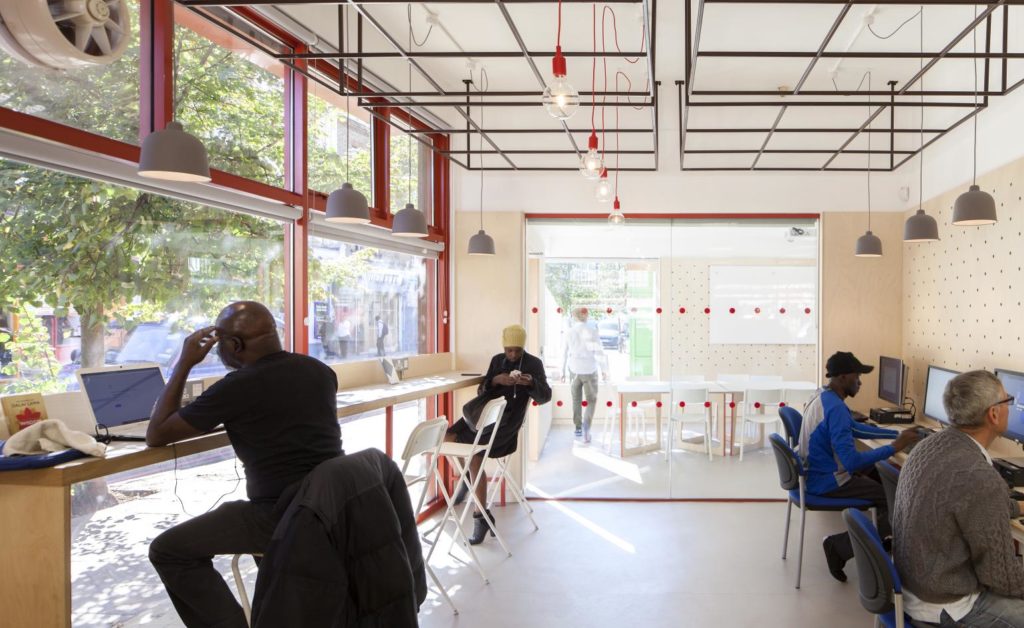These are the B Corp architecture studios dedicated to positive change
B Corp month is taking place through March, and here we highlight this important movement towards a better, more equitable world, and celebrate the UK architecture studios that have become part of the B Corporation
Designers should be striving to make the world an inclusive, equitable, and regenerative place. The onus should not simply lie on charities, institutions, and governments but on those that help shape our environments. According to B Lab, one way for architecture practices to help drive positive societal change is by becoming certified B Corporations – enter, the UK’s B Corp architecture studios.
B Corps are organisations that must meet high social and environmental standards and make a positive impact on their stakeholders, staff, and the planet. They are ethical businesses that carefully balance their purpose and profits. Currently, there are 4,700 B Corps across 55 industries worldwide, with 11 being architecture and design practices in the UK. At present, Kennedy Woods, Stride Treglown, We Made That, Planit IE, Joseph Homes, MCM, Boutique Modern, igloo regeneration, Periscope, Useful Simple Trust and Bennetts Associates all make up the architecture B Corp community. Kennedy Woods was the first UK-based architecture practice to be fully B Corp accredited and has been leading the way for other firms to follow ever since. ‘We believe it’s a great framework for any conscientious practice, with a lot of benefits if you’re willing to put in the effort,’ says director of Kennedy Woods, Tom Woods.
Tom Woods of Kennedy Woods leading a workshop with students at the studio’s Peckham office
To become a B Corp, you must go through a vigorous process that is accessed by B Lab. The certification measures a business’s social and environmental performance, transparency, and accountability. To certify, companies need to have been running for at least 12 months and operate for profit in a competitive market. Companies must complete a B Impact Assessment that is tailored to their sector, size, and location. ‘Certification is both a holistic and granular process. You have to earn at least 80 points out of a possible 150 across five categories: governance, workers, community, environment, and customers,’ explains Woods. ‘You’re then audited based on provided evidence, to confirm you’ve met the targets.’ The assessment evaluates the way a company runs its staff programmes, their social and environmental impact, and supply chain process. ‘If you’re not measuring it, it’s not real. Without benchmarks, how do you know if you’re making progress?’ he adds.
To maintain the certification companies must recertify every three years. They are also required to publish an annual impact report to share progress and goals. Being a part of the B Corp community allows organisations to get advice and support and provides them with an onslaught of networking opportunities. ‘One of the great practical benefits is the B Corp network. It’s an amazing forum for getting business, advice, and support,’ says Woods. Every action designers take has an impact on people and the environment, so by becoming a B Corp, practices can genuinely drive well-needed change.
Kennedy Woods
Kennedy Woods’ Hearing Birdsong installation. Photography: Taran Wilkhu
London-based practice Kennedy Woods was the first B Corp architecture firm in the UK. Founded by Tom Woods and Chris Kennedy, the practice prides itself as a value-led organisation. ‘Everyone trumpets the buzzwords – sustainability, transparency, employee wellbeing – but the B Corp badge is a third-party gold standard for ethical business practice,’ says Woods. For the practice, it is a badge that helps them connect with like-minded stakeholders, collaborators, and clients. ‘The B Corp status is a constant reminder for us to keep striving to improve our practice.’
We Made That
Hackney Wick and Fish Island conversations, where We Made That engaged with residents
It took multi-disciplinary architecture firm We Made That 12 months to become a B Corp. ‘It’s a public declaration of intent and external stamp that distinguishes us from other practices,’ explains co-founder Holly Lewis. The B Corp process helped the company identify a clear framework for business improvement. ‘Interestingly, it has been brought up my potential employees in recent recruiting’ she continues. ‘I think certification could do a lot for the industry – beyond the obvious environmental performance impacts – including better treatment of employees, governance and transparency.’
Stride Treglown
Sinking House. Photography: Tom Bright, courtesy Stride Treglown
For Stride Treglown the B Corp certification represents the practice’s journey for excellence. ‘It’s part of a wider push to constantly improve our business,’ explains practice chair Pierre Wassenaar. It took the company six months to become fully certified. ‘The advice I’d give is to make sure you involve a wide group to help put together the responses. Our HR director, Finance Director, and Head of Social Value were all essential to the process,’ he says. For Stride Treglown the certification impacts the projects they take on, their potential clients, and how the company operates.
Morris + Company
Architect Joe Morris among models at the practice studio
‘We made a commitment to become a certified B Corp some time ago,’ says director Judith Topley. The practice started the process last year and has set up working groups to focus on each of the five pillars. The firm sees the certification (which they are currently working towards) as a method to assess their everyday activities. ‘The accreditation would help us show our values to employees, clients, and the wider community,’ says Topley. ’It would allow us to be part of a broader movement for good, influence others and bring about positive change.’
§
